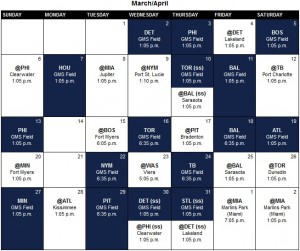

for the Day Of Month and Month columns 1/1 and * are equivalent as these are 1 based. You can configure batch job scheduling with annotation EnableScheduling and method annotated with Scheduled followed by cron job time details, so that.for the minutes, hours, and day of week columns the 0/1 and * are equivalent as these are 0 based.Let's break down the expression into separate components: There are multiple ways to schedule a task in Java. This guide explains how a Quarkus application can leverage the well known Spring Scheduled annotation to configure and schedule tasks. In Spring cron expression use to run tasks in 1-hour intervals looks like the following: The scheduler is used to schedule a thread or task that executes at a certain period of time or periodically at a fixed interval. In Spring scheduler a cron expression consists of six sequential fields: second, minute, hour, day of the month, month, day(s) of the week. Cron expression every hour for Spring Scheduler We can break down the expression into the following components:Ġ * * * * /usr/bin/php /home/username/public_html/cron.php >/dev/null 2>&1Ġ * * * * mysqldump -u root -pPASSWORD database > /root/db.sql >/dev/null 2>&1Ġ * * * * /bin/bash /home/username/backup.sh >/dev/null 2>&1ģ. The cron expression for crontab daemons that execute task every hour looks like the following: If our tasks are truly independent, it's more convenient to run them in parallel. As a result, even if we have multiple Scheduled methods, they each need to wait for the thread to complete executing a previous task. Each line in the crontab file contains six fields separated by a space followed by the command to be run. By default, Spring uses a local single-threaded scheduler to run the tasks. In Linux operation system there are a special crontab files used to configure cron jobs. This allows you to create new jobs and triggers, and also to control and monitor the entire Scheduler.
SPRING SCHEDULER REGISTRATION
Cron expression is a special format used for defining time for scheduled tasks.Ģ. For dynamic registration of jobs at runtime, use a bean reference to this SchedulerFactoryBean to get direct access to the Quartz Scheduler ( ).

Make sure you set setRemoveOnCancelPolicy( true) at TaskScheduler.In this article, we are going to present cron expressions which are responsible for executing specific task every hour. These cancelled futures can pile up in the internal queue maintained in Executor and cause memory leaks. public synchronized void updateSchedule( Integer syncScheduleInSeconds) That’s why we cancel the future and re-configure the schedule again. If your last run was at 10:00, sure you wouldn’t want to wait till 11:00 for the change to take effect. Problem is when your initial schedule was 1 hour and now you want to change it to, say, 5 mins. Instead, just let the next run pick up the updated schedule” just like how we don’t interrupt the one in-progress because the schedule will be updated anyway when it is done, we can also say, “the next run is coming up within X seconds so don’t bother cancelling this future and rescheduling one again. I extended this a little to add a threshold too. If there is one already in-progress, the updated schedule will apply after it is done and asking for the next schedule at Trigger. Now its time to manipulate the schedule.įrom the ScheduledFuture obtained, I know when the next run is going to kick start or if there is one in progress already - using getDelay() So far I have done what that little annotation was doing for me out of the box. ScheduledFuture schedule(Runnable task, Trigger trigger) Semester/Year: Departments: Second Spring.

Say T1 executed at 10:00 and took 12 mins, next trigger should have been at 10:10 but that time has passed already! So it will trigger right away. Say T1 executed at 10:00 and took 5 mins, using this trigger I would say next trigger should be at 10:00 + 10 = 10:10 EnableAsync With this annotation, we can enable asynchronous functionality in Spring. In this quick tutorial, we're going to explore the Spring Scheduling Annotations. I am particular interested in lastActualExecutionTime() - when the last run started executing so that I can implement a fixed delay. Overview When single-threaded execution isn't enough, we can use annotations from the package. It gives a TriggerContext to know when the last run executed/completed. I am using a Trigger - which is how after every run, the scheduler know when to kick start the next run.they must be completed at the scheduled examination time and may not require more. I am scheduling task when the application comes up using a SchedulingConfigurer Final Examninations Schedules for Winter and Spring Quarters, 2019.


 0 kommentar(er)
0 kommentar(er)
